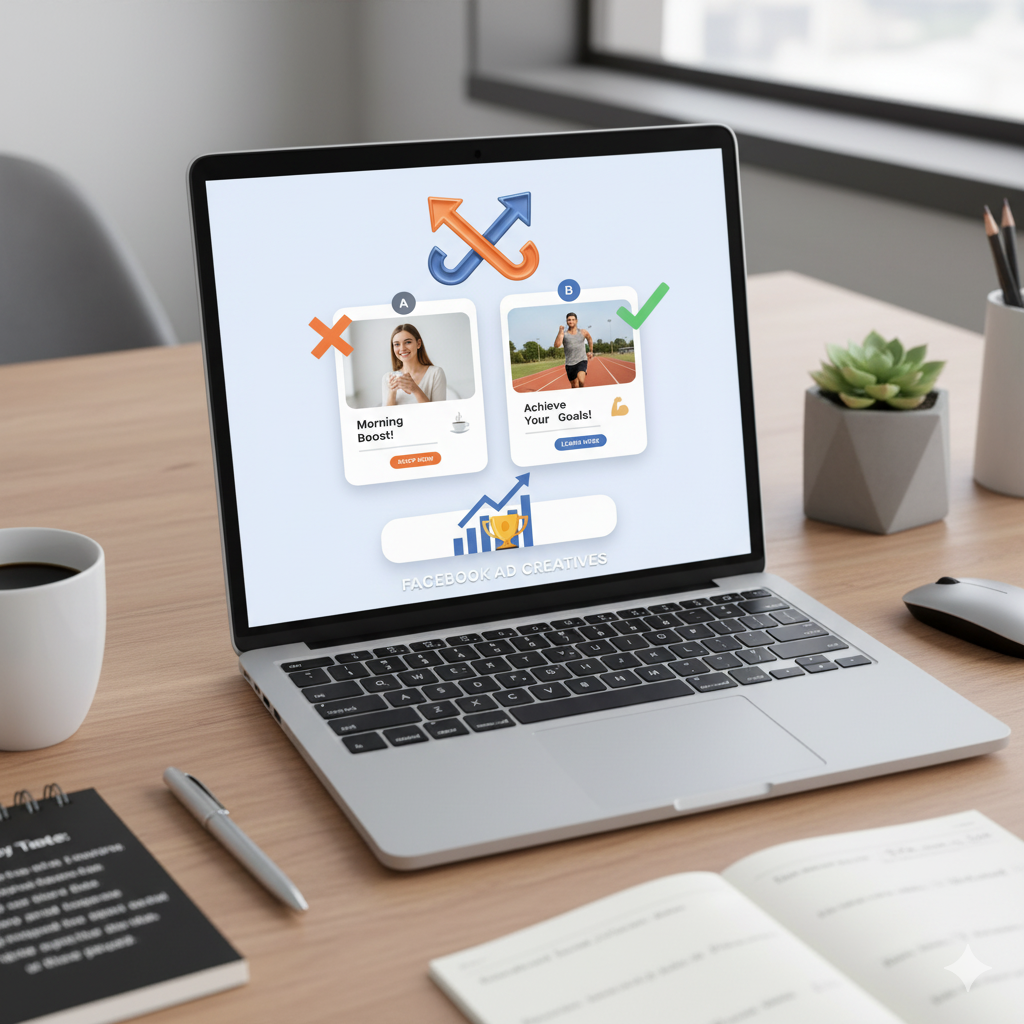
How to Run a Winning A/B Test on Facebook Ad Creative
Alright, let’s talk about Facebook ads or more specifically, how not to throw your money at them blindly. You know how sometimes you post two photos on Instagram and one blows up while the other one just... sits there? Facebook ads work kinda like that too. You think you know what’ll perform better, but honestly? You don’t until you test it. That’s where A/B testing comes in.
Basically, A/B testing (aka split testing if you want to sound fancy) is just running two versions of the same ad to see which one makes people click, buy, or do whatever you want them to do. It’s less about guessing and more about letting data tell you what works which is both nerdy and brilliant.
So, what’s A/B testing anyway?Imagine you’ve got two versions of your ad. Maybe one headline says “Boost Your Productivity in 7 Days” and the other says “Get More Done With Less Effort.” You don’t know which one’s the winner yet so Facebook shows each version to different groups of people. After a while, you check the results, and the better ad reveals itself through cold, hard numbers.
That’s all it is. You change one thing, maybe a headline, image, or button and see which performs better. Rinse and repeat.
Why even bother testing?Well, because guessing costs money.
- You stop wasting budget on underperforming ads and funnel that cash into what actually works.
- Your ROI goes up, which is just a fancy way of saying you make more with less.
- You learn what people actually like, so your future ads don’t flop.
- And hey, you stop relying on “gut feeling” because honestly, our guts aren’t as smart as the data.
-
Pick your goal first
What are you testing for? Clicks? Sales? Engagement? Video views? Pick one clear metric so you can declare a real winner later. Don’t just test for “vibes.” -
Decide what to tweak
Don’t go wild and change everything at once — you’ll never know what caused the difference. Just pick one thing:- Try two different images or videos
- Write a new headline
- Adjust your ad copy (storytelling vs. straight facts)
- Swap your CTA button — “Shop Now” vs. “Learn More” sounds small but can be huge
Start small. Data loves simplicity.
-
Set it up properly
Facebook’s got a tool for this — it’s literally called Experiments. You’ll find it under Ads Manager → Experiments → Create A/B Test.
Select what you’re testing (like the creative), and let Facebook automatically divide your audience so the test is fair. Don’t manually fiddle with it, just let the algorithm do its thing. -
Give it enough time
Here’s where most people mess up: they stop the test too early. Run it for at least 3–7 days so you get a real picture of performance. If your ad only got a few clicks, that’s not data — that’s noise. -
Watch but don’t interfere
You’ll want to tweak it mid-test (trust me, it’s tempting), but don’t. You’ll mess up the results. Instead, keep an eye on metrics like:- CTR (Click-Through Rate)
- CPC (Cost Per Click)
- CPA (Cost Per Acquisition)
- Conversion rate
Then just... wait. I know. Painful.
-
Pick your winner
When it’s done, look at the numbers, not your feelings. The winner should clearly outperform the other one on your chosen metric. If it’s close, run another test to double-check before you scale up. -
Scale and repeat
Now that you’ve got a winner, slowly increase its budget. Don’t just triple it overnight. Facebook will panic. And then? Start a new test. Maybe change the image this time. Or try a different audience. A/B testing never really ends; it just keeps your ads from getting stale.
Some pro tips
- Only test one variable at a time. Otherwise, you’re just making chaos.
- Keep everything else (budget, audience, timing) consistent.
- Use good visuals. Testing two bad creatives won’t suddenly make one of them good.
- Write down your results — seriously, you’ll thank yourself later.
- Keep testing. What works this month might flop next month.
The bottom line
A/B testing isn’t some marketing “hack” — it’s just smart experimenting. You’re learning what your audience clicks on, what makes them buy, and what totally bombs. It saves money, boosts conversions, and makes your ads actually work. Start small, test often, and let your data not your gut do the talking.
FAQs About Facebook Ad A/B Testing
- Can I test multiple ad elements at once?
It’s possible, but it’s better to test one element at a time for clear insights. Testing multiple elements can make it difficult to identify which change caused the performance difference. - How long should an A/B test run?
Run the test for at least 3–7 days, depending on audience size, to collect sufficient data and reduce daily fluctuations. - What’s a statistically significant result?
A statistically significant result occurs when the performance difference between variations is unlikely to be due to chance. Larger audiences and more conversions increase confidence in results. - Can I use A/B testing for Facebook ads with small budgets?
Yes, but results may be less reliable. Ensure enough impressions per variation to make meaningful comparisons. - Should I stop the losing ad immediately?
Not during the test. Stop the test only after reaching statistical significance to avoid skewed results.